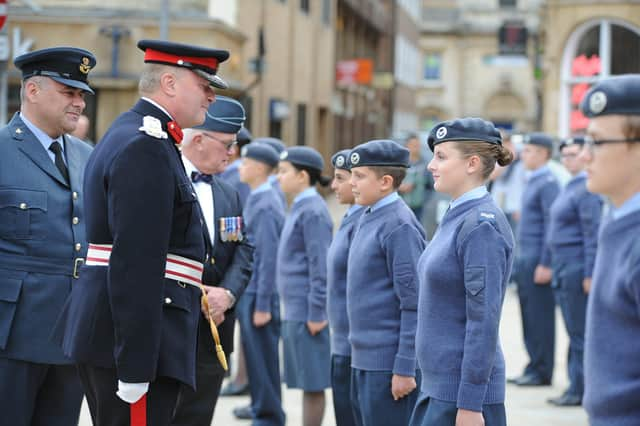Queen’s approval for Peterborough man to become new High Sheriff of Cambridgeshire


The name of Brigadier Timothy John Seal TD of Orton Longueville was on a list among 51 High Sheriffs who had earlier nominated for office for the next 12 months.
He will take over from another Peterborough man, former Crown Court judge Neil McKittrick.
Advertisement
Hide AdAdvertisement
Hide AdHowever, before the Sheriffs can take office they have to be officially appointed by the Queen in an ancient ceremony in which their names on the list are pricked by her using a silver bodkin said to have once been owned and use for the same purpose by Queen Elizabeth I.
One story is that Queen Elizabeth I used the bodkin because she didn’t have a writing implement at the time she was asked to make her mark on the list and that the practice then carried on.
The ceremony at the Palace yesterday (Wednesday) followed in the wake of a glittering ceremony at London’s High Court last November before the Lord Chief Justice and three of the country’s other senior judges at which the Sheriffs were nominated.
High Sheriffs rank among the highest dignitaries in their counties. It is the oldest secular office in the country and yesterday’s ceremony is one which down the ages has officially signified the reigning monarch’s approval of those nominated.
Advertisement
Hide AdAdvertisement
Hide AdNow, in the coming weeks the High Sheriffs will make declarations in accordance with the 1887 Sheriffs Act and take office after that.
High Sheriffs - ‘Shire Reeves’ as they were originally known - were appointed for each county and used to have to give account to the reigning monarch once a year of the money they had collected on behalf of the monarch.
These days of course the High Sheriffs no longer collect money for the monarch in the way their predecessors did in centuries past.
They also had many other powers but the majority of those have now been vested in Lord Lieutenants, High Court judges, magistrates, local authorities, coroners and even the Inland Revenue.
Advertisement
Hide AdAdvertisement
Hide AdToday the functions of the post are now almost entirely ceremonial. The only significant legal functions relate to the enforcement of High Court writs.
However, High Sheriffs are still expected to be ready to attend to the needs of, and provide hospitality to, High Court judges out on “circuit”, when they preside over the county’s crown courts.
And, ranking as they do among the country’s top dignitaries they are also expected to attend at royal visits to their counties.